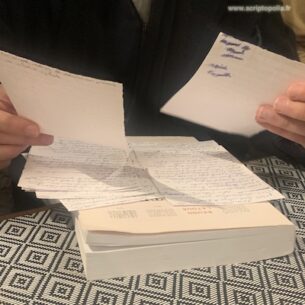In the test bed
The first bell is visible in the hall. It arouses the curiosity of visitors, whose eyes have become familiar with terrariums, which have been trendy in recent years. As you walk through the floors and open the doors of the meeting rooms, you will find other examples, 19 to be precise, spread throughout the building. Not only do they reveal their contents behind their glass walls, they are also on display directly on the tables. The design indicates that the object is intended to be transparent, but it is not intelligible. When we ask those who occupy the premises about this curious object, they explain that they are sensors, but they do not know what is being collected, for what purpose, by whom, and do not seem to be too concerned about it.
If you look in the rooms, you end up finding these small boards, A6 size, framed as if they were photos. In a lower 10 font, the sign informs, in a friendly first-person tone, that the bells are hosting an experiment called the Open Testbed’s Network. We then learn that this network of connected, wireless sensors under a bell, in reference to the Big K (the prototype of the kilogram kept by the International Bureau of Weights and Measures), makes this building an “intelligent building”, which the “Eva team” is researching. It is linked to two other test areas: a marina and a peach orchard.
The QR code on the grey background is not readable by my phone, so it is not clear what this surprising device is. But it is now a little easier to understand why its appreciation by the occupiers is limited. This panel is the only statement that we are caught up in an experimentation – an experimentation (like others, definitely light) whose object, hypotheses, instruments, purpose and the identity of the experimenters turn out to be fuzzy, if not opaque, despite the appearance of transparency. In addition to the paradox of conducting such experiments in areas with restrictive rules where research is protected from intrusion, the board reminds us that the researchers are often themselves docile experimental subjects.







